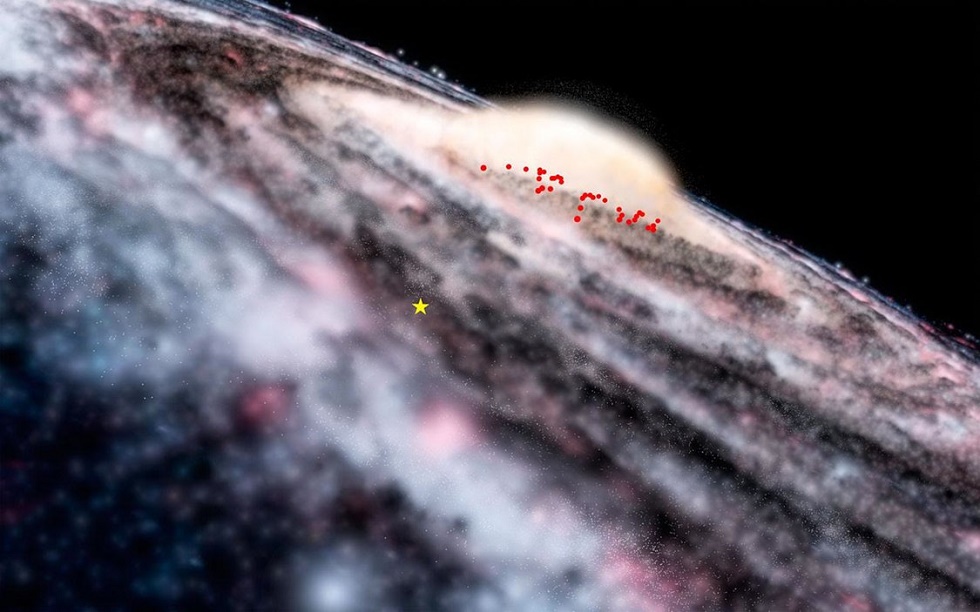
Scientists have discovered a previously unknown part of the galaxy. This part consists of a thin disk of young stars that stretches across the center of the galaxy.
The European Space Agency’s Southern Observatory and the Vista telescope in Chile have long studied the central region of our own Milky Way Galaxy. But to their surprise, astronomers recently discovered a whole new part of the Milky Way.
Measurements revealed new stars and – by astronomical standards – very young stars. The youngest can be as young as 25 million years old.
“The central bulge of the Milky Way is thought to consist of vast numbers of old stars. But the VISTA data has revealed something new — and very young by astronomical standards!” says Istvan Dékány, lead author of the new study.
The researchers found several hundred new Cepheids (stars which brighten and dim periodically) of which 35 are “only” about 100 million years old. The age of the Milky Way is 13,2 Billion years in comparison.
“All of the 35 classical Cepheids discovered are less than 100 million years old. The youngest Cepheid may even be only around 25 million years old, although we cannot exclude the possible presence of even younger and brighter Cepheids,” explains the study’s second author Dante Minniti, of the Universidad Andres Bello, Santiago, Chile.
This discovery gives us clear evidence that there has been a continuous supply of newly formed stars in the Milky Way and this is completely novel science.
The discovery has been published in the Astrophysical Journal Letters.
_______________
The VVV Survey reveals classical Cepheids tracing a young and thin stellar disk across the Galaxy’s bulge
______________________________











![OpenAI. (2025). ChatGPT [Large language model]. https://chatgpt.com](https://www.illustratedcuriosity.com/files/media/55136/b1b0b614-5b72-486c-901d-ff244549d67a-350x260.webp)
![OpenAI. (2025). ChatGPT [Large language model]. https://chatgpt.com](https://www.illustratedcuriosity.com/files/media/55124/79bc18fa-f616-4951-856f-cc724ad5d497-350x260.webp)
![OpenAI. (2025). ChatGPT [Large language model]. https://chatgpt.com](https://www.illustratedcuriosity.com/files/media/55099/2638a982-b4de-4913-8a1c-1479df352bf3-350x260.webp)








